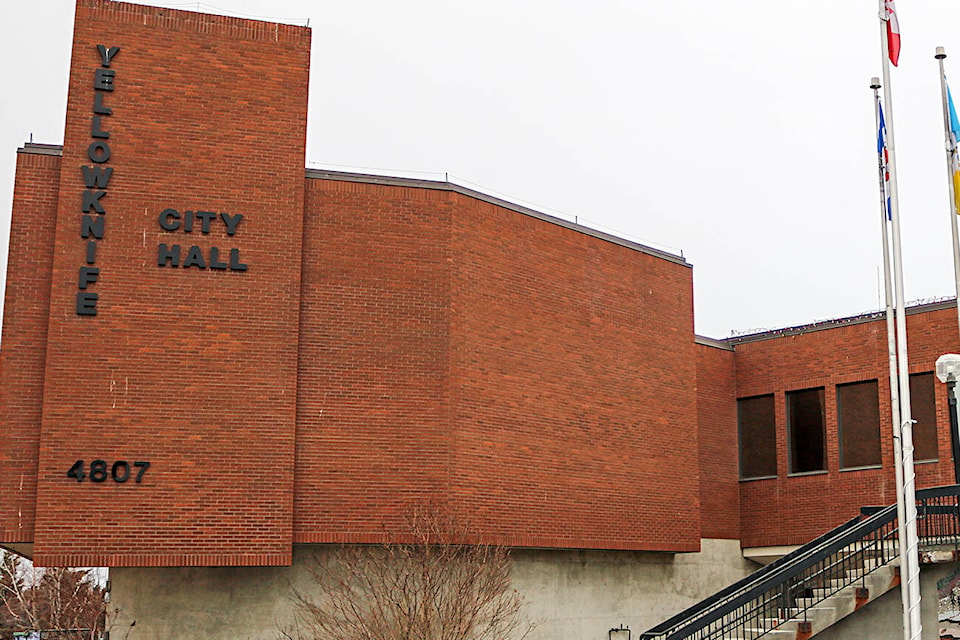Official approval regarding the change of the mill rate ratio (going from 1:2.26 to 1:2.13) occurred at the May 24 City Council meeting.
Following this change, residential property owners (during tax season) will see a 9 per cent property tax increase.
Specifically, residential property owners will see a 9.04 increase, while commercial owners will see a increase of 2.27 per cent.
The change comes as a result of conversations initially brought forward by the Yellowknife Chamber of Commerce, where Council was asked to maintain the mill rat ratios so as to not continue the gap between residential and commercial property owners in terms of taxation.
“We urge council to make changes now, whether through a motion of council or a formal budget policy to maintain mill rate ratios fixed at the previous year’s levels,” read the chamber’s notice back in April.
“We just want it to be fair,” Warburton said during his presentation.
Before approval occurred, councillor Niels Konge (who was in favour of the change) brought attention to how the extra tax payment for owners of properties assessed at around $500,000 would be 10 dollars, while owners of commercial properties assessed at the same amount would instead safe $145.
Councillor Julian Morse, who was not in favour, attempted to amend the bylaw’s ratio, stating that “the 9 per cent is what I’m trying to prevent.”
“To change the ratio this year … would create this sudden and unexpected leap for residential tax payers to 9 per cent which is far more than people expect,” added councillor Shauna Morgan, who was also not in favour.
The lead up
During Council’s meeting on May 9, approval of the motion to decrease the mill rate ratio was quite narrow with four to three in favour.
As noted by mayor Rebecca Alty at the previous gathering, a ratio change would result in a wider rate gap between residential and commercial property owners.
“As administration showed us at lunch today, in 2020, residential taxes went up 1.7 per cent,” she said at the May 9 meeting. “Whereas commercial taxes went up (1.58 per cent). 2021 was the same thing. Residential taxes went up 2.6 per cent and commercial taxes went up just a bit less at 2.54 per cent.”
“This year, I’m not supportive of having residential taxes go up 9 per cent (and) commercial taxes going up 2.7 per cent,” she continued. “Financially, I appreciate this will be a tough year for many, whether it’s the residence or business. Which is why I don’t want to shift the burden from one class to another. I want to keep the mill rate ratio the same as it’s been for the past year.”
Through the Yellowknife Chamber of Commerce’s presentation, which was conducted by president Robert Warburton, the end goal of the chamber was to have the city maintain the ratio and to set clear policies regarding mill rates.
There was no mention of a need to decrease the mill rate ratio.
Warburton, in a previous discussion with the Yellowknifer, had mixed feelings about council’s approval of the motion to decrease the ratio.
“It’s nice to see,” he said. “But the policies would have been nice, because that was what we actually asked for.”
“What we’re asking for resonated, it just landed differently than we anticipated.”
RELATED REPORTING: YK Chamber wants city to hold the line on tax increases for businesses
“We had asked for the city to set clear policies and processes for setting the rates and how those are done because, historically, that’s been kind of left to administration to interpret,” he said. “They’ve done it in a way that it’s disadvantaged business consistently over the years.”
The City has said that the next council would be the one to decide the aforementioned policies at the next general assessment.
“Which means we’re going to have to have the conversation again, (at) the next general assessment,’ Warburton said. “Which is a little unfortunate.”
